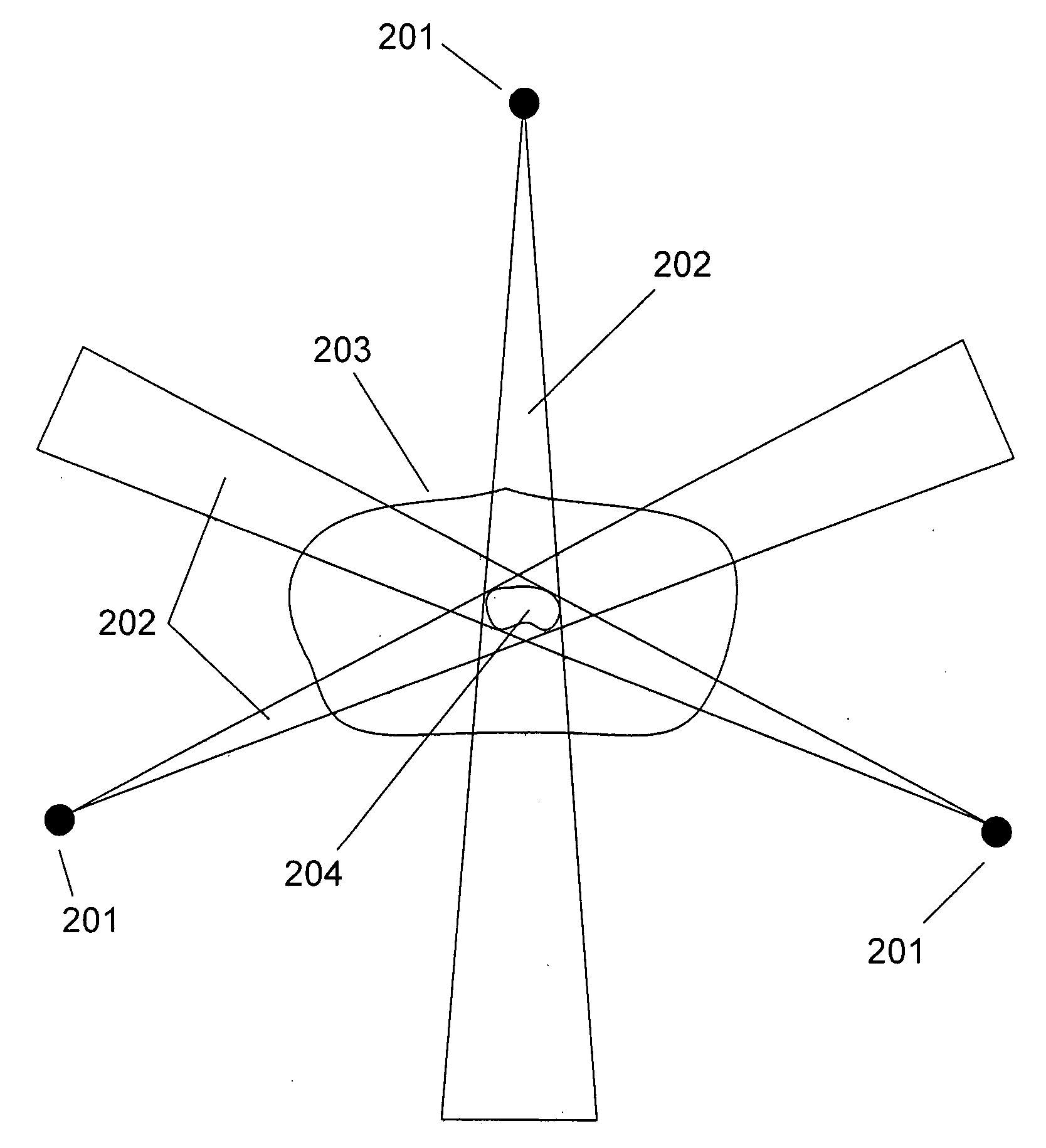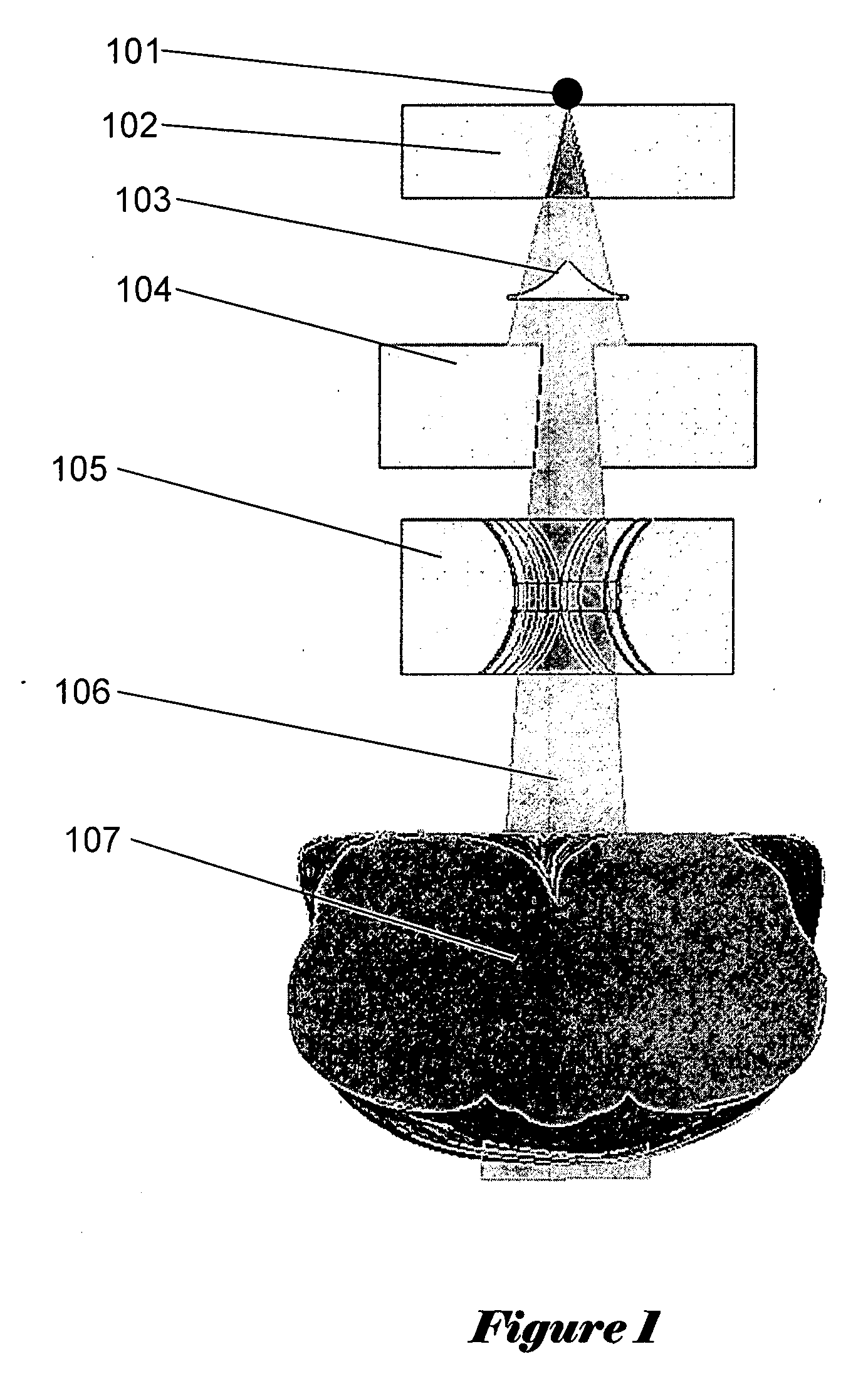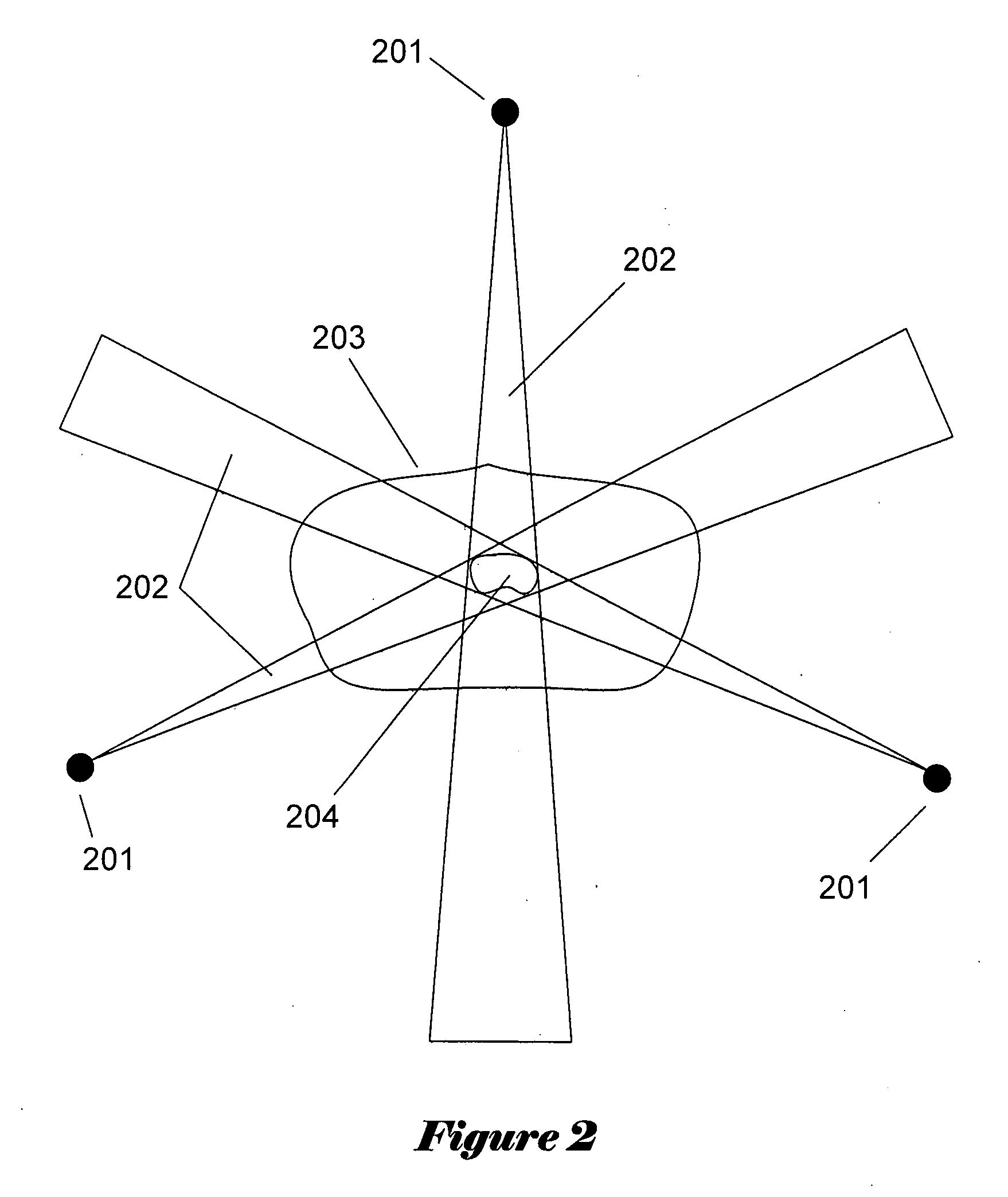Method and system for the calculation of dose responses for radiotherapy treatment planning
a radiation treatment and dose response technology, applied in the field of computer simulation of radiation transport, can solve the problems of inability to optimize treatment plans inability to achieve treatment planning in a clinical framework, and inability to accurately calculate doses. the effect of rapid dose calculation
- Summary
- Abstract
- Description
- Claims
- Application Information
AI Technical Summary
Benefits of technology
Problems solved by technology
Method used
Image
Examples
Embodiment Construction
[0027] A method is presented for accurately pre-calculating the dose response at one or more points, voxels, or regions for the purposes of external photon beam radiotherapy treatment planning.
[0028] Following is a description of the governing forward and adjoint transport equations for neutral and charged particles, which is provided as an introduction. Since the immediate application is photon beam radiotherapy, only the coupling of electrons and photons is presented, though this does not preclude the use of other paired particle or single particle calculations.
Forward Coupled Photon-Electron Transport Equations
[0029] For a problem spatial domain with volume, V, and surface, δV, the time-independent, three-dimensional system of coupled Boltzmann transport equations (LBTE) to be solved are given by (for brevity the dependent variables have been suppressed in the equations): Ω^·∇->Ψγ+σtγΨγ=qγγ+qγ,(1a)Ω^·∇->Ψe+σteΨe-∂∂ESRΨe=qee+qγ e+qe,(1b)
where Equations (1a) and (1b...
PUM
 Login to View More
Login to View More Abstract
Description
Claims
Application Information
 Login to View More
Login to View More - R&D
- Intellectual Property
- Life Sciences
- Materials
- Tech Scout
- Unparalleled Data Quality
- Higher Quality Content
- 60% Fewer Hallucinations
Browse by: Latest US Patents, China's latest patents, Technical Efficacy Thesaurus, Application Domain, Technology Topic, Popular Technical Reports.
© 2025 PatSnap. All rights reserved.Legal|Privacy policy|Modern Slavery Act Transparency Statement|Sitemap|About US| Contact US: help@patsnap.com



